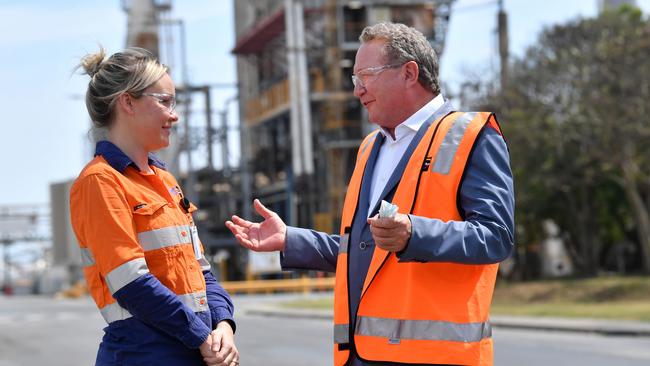Scale will cut cost of green hydrogen: ANZ
Green hydrogen remains three times more expensive than supplies from gas, but experts predict the cost of production from renewable sources could reach parity by 2030.

Green hydrogen remains three times more expensive than supplies from gas, but experts predict the cost of production from renewable sources could reach parity by the end of the decade.
Former prime minister Malcolm Turnbull, chairman of the Australian arm of Andrew Forrest’s Fortescue Future Industries, which is pursuing renewable hydrogen, said on Tuesday the company could make green supplies cheaper than blue or gas-sourced hydrogen used with carbon capture and storage.
However, ANZ said that point was still years away, with the green energy source currently more expensive than any other commercialised form of hydrogen production. “If we look at hydrogen from renewable sources and electrolysers, it is probably in that three to five times more expensive band at the moment,” said John Hirjee, ANZ’s executive director for resources, energy and infrastructure.
However, a fall in the costs of electrolysers – used to split water to form hydrogen and oxygen – and a key component of the manufacture of green hydrogen is expected to make it competitive this decade. The electrolyser industry has dropped its capital costs by 75 per cent in the past four years, according to ANZ, sparked by a market need for larger systems and better design and manufacturing.
“Costs of hydrogen electrolysis capital expenditure is expected to drop by a further 30-50 per cent in the next decade, as national targets and pilot projects produce enough volume to realise substantial declines,” ANZ said in a report on hydrogen to be released on Thursday.
Goldman Sachs expects Australia to compete with the Middle East, Chile and North Africa in the race to become the world’s biggest hydrogen exporter, with the global market forecast to be worth $US1 trillion ($1.4 trillion) by 2050 as major economies pivot to the energy source to hit net zero emission goals.

Domestically, rival producers have been taking shots at each other as the battle for supremacy heats up. Gas giant Santos said in October the cost of green hydrogen from Dr Forrest’s Port Kembla plant would be nearly three times higher than hydrogen sourced from its Moomba hub in South Australia’s Cooper Basin.
ANZ said manufacturing electrolysers on an industrial scale and further falls in the cost of solar and wind could lead to green hydrogen becoming cost competitive.
“Australia is well placed to achieve low-cost green hydrogen production due to its low-cost renewable energy supply and the potential to achieve large economies of scale, but demand needs to be created to drive down costs, and a wide range of delivery infrastructure needs to be built with the support of government targets and subsidies, to help achieve these future cost targets,” Mr Hirjee wrote in the report.
The CSIRO’s Hydrogen Industry Mission aims to cut the cost of hydrogen production to under $2 per kilogram, from up to $9 per kilogram currently, and position Australia to replicate its success with iron ore and LNG through a new clean fuel export business.
Up to 8000 jobs and $11bn a year in GDP could be fed back into the economy if the right settings and cost structures are put in place, according to the CSIRO.
Green hydrogen is nearing cost competitiveness for heavy trucking, buses and remote power, with the potential to become commercially viable across other transport sectors as early as 2030, the Clean Energy Finance Corporation has said. The Australian Hydrogen Council has called for $10bn in seed funding and a top-up of $1bn annually through to the end of this decade, to be allocated to business through grants and loans, to boost the industry.
Chief executive Fiona Simon said the $2 per kilogram target was achievable given the huge influx of capital and developments under way.
“We probably can get there and there’s far more of a belief that we can get there than it was a year ago or 18 months ago,” Dr Simon said.
“With the pace of announcements and with the scale of the ambition and competitive pressures at play here, I think that we’ve got something which is doable.”
Originally published as Scale will cut cost of green hydrogen: ANZ





